 |
 |
 |
| |
Two or More Anticholinergics Tied
to Falls, Frailty in People With HIV
|
| |
| |
2022 CROI, February 12-16 and 22-24, 2022
Mark Mascolini
Analysis of 699 older people with HIV linked use of two or more anticholinergic drugs to 3.6-fold to 4.5-fold higher odds of recurrent falls and to doubled odds of frailty [1]. Findings reflect similar prior results in the general population.
Researchers working with the UK/Ireland POPPY cohort noted that clinicians prescribe anticholinergics to treat mental health conditions, bladder trouble, or allergies-all concerns common to an aging HIV population. Side effects can include dry mouth, urinary retention, and constipation. This POPPY study set out to see if taking anticholinergics affects frequency of two age-related problems-falls and frailty.
The investigators noted the relative dearth of anticholinergic studies in people with HIV, even though 15% to 30% of HIV populations take these oft-prescribed drugs. A recent US study of 209 people with HIV and 90 without HIV tied anticholinergic use to "worse neuropsychological performance and reduced structural brain integrity," more so in people with than without HIV [2].
POPPY is a prospective cohort study of HIV-positive and negative people in the UK and Ireland that explores effects of aging on clinical outcomes. People in the HIV-positive group can be younger or older than 50, whereas everyone in the HIV-negative group is 50 or older. Study recruitment began in 2011. Researchers set the baseline at study visit 1 (April 2013 to January 2016).
This analysis assessed two main outcomes-recurrent falls (2 or more self-reported falls within the past 28 days) and frailty (using modified Fried criteria [3]). At study visit 1 participants provided a detailed medical history, gave blood and urine samples, got tested for cognitive function, and had a DXA scan for bone density. Logistic regression analysis of cross-sectional data collected at the baseline visit considered several potential confounders: sociodemographic variables, lifestyle factors, HIV-related indices, comorbidities, comedications, and major depressive disorder determined by PHQ-9.
For this study the POPPY team focused on 699 HIV-positive people aged 50 years or older. Median age stood at 57 years, 88% of participants were men, 86% white, and 14% unemployed. About two thirds had higher education, and 25% used recreational drugs in the last 6 months. Of these 699 people, 129 (18%) took one anticholinergic and 63 (9%) took two or more. The most frequently prescribed anticholinergics were codeine (in 12%), citalopram (12%), loperamide (9%), amitriptyline (7%), diazepam (6%), and cetirizine (5%).
Sixty-three of 673 people assessed (9%) had recurrent falls, and 32% met frailty criteria. Compared with 506 people who did not use an anticholinergic, the 193 who did were more likely to be single (69% vs 60%, P = 0.01), be unemployed (17% vs 13%, P = 0.05), use a recreational drug in the past 6 months (31% vs 23%, P = 0.05), have moderate or severe depressive symptoms (16% vs 10%, P = 0.001), have a higher average number of comorbidities (4.19 vs 2.76, P < 0.001), and take 5 or more nonanticholinergics (36% vs 9%, P < 0.001). Anticholinergic use did not differ significantly by age, sex, or education level.
Recurrent falls occurred in significantly more HIV-positive people taking versus not taking anticholinergics (about 17% vs 6%, P < 0.001). And significantly more people meeting modified frailty criteria took anticholinergics (about 30% vs 18%, P < 0.001). After statistical adjustment for demographic, lifestyle, and clinical factors, any anticholinergic almost doubled odds of recurrent falls in an association that stopped short of statistical significance (odds ratio [OR] 1.9, 95% confidence interval [CI] 0.9 to 4.0, P = 0.08). The same analysis tied any anticholinergic use (nonsignificantly) to 70% higher odds of frailty (OR 1.7, 95% CI 0.9 to 3.0, P = 0.08).
Logistic regression adjusted for demographic and lifestyle factors significantly linked use of two or more anticholinergics to 4.5-fold higher odds of recurrent falls (OR 4.5, 95% CI 2.1 to 10, P < 0.001). And adjustment for demographic, lifestyle, and clinical factors boosted odds of recurrent falls 3.6-fold (OR 3.6, 95% CI 1.4 to 9.4, P = 0.009) with two or more anticholinergics . Regression analysis adjusted for demographic and lifestyle variables tied use of two or more anticholinergics to more than doubled odds or frailty (OR 2.3, 95% CI 1.1 to 4.7, P = 0.03), while analysis adjusted for demographic, lifestyle, and clinical variables saw a nonsignificant association between two or more anticholinergics and frailty (OR 2.1, 95% CI 0.9 to 5, P = 0.09).
POPPY investigators noted three limitations of their study-its cross-sectional nature, inability to consider anticholinergic dose or duration, and reliance on self-report for anticholinergic use and for some outcomes. Still, the researchers stressed that their findings echo studies of anticholinergic associations in general populations worldwide, so they suggested clinicians consider these potential anticholinergic impacts and lower use of these drugs when possible.
References
1. Doctor J, Winston A, Vera J, et al. Anticholinergic medications associated with falls and frailty in people with HIV. 2022 CROI, February 12-16 and 22-24, 2022. Abstract 35.
2. Cooley SA, Paul RH, Strain JF, Boerwinkle A, Kilgore C, Ances BM. Effects of anticholinergic medication use on brain integrity in persons living with HIV and persons without HIV. AIDS. 2021;35:381-391. doi: 10.1097/QAD.0000000000002768.
3. Fried LP, Tangen CM, Walston J, et al. Frailty in older adults: evidence for a phenotype. J Gerontol A Biol Sci Med Sci. 2001;56:M146-156. doi: 10.1093/gerona/56.3.m146
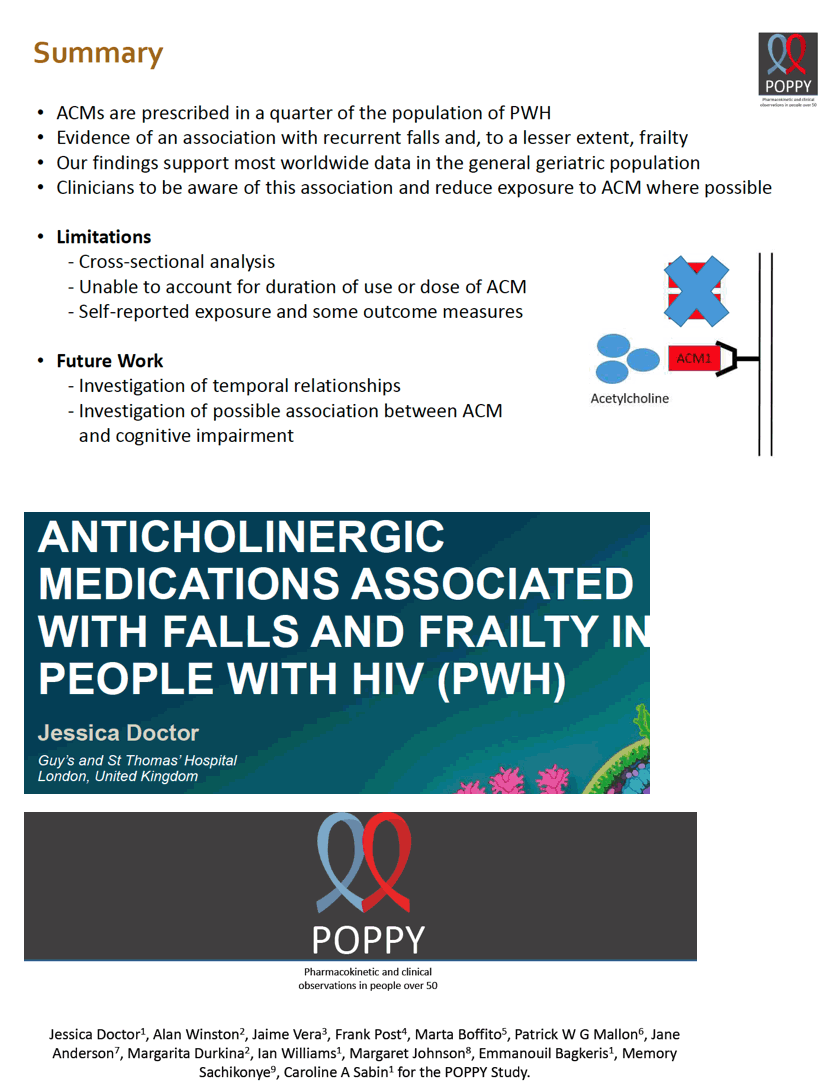
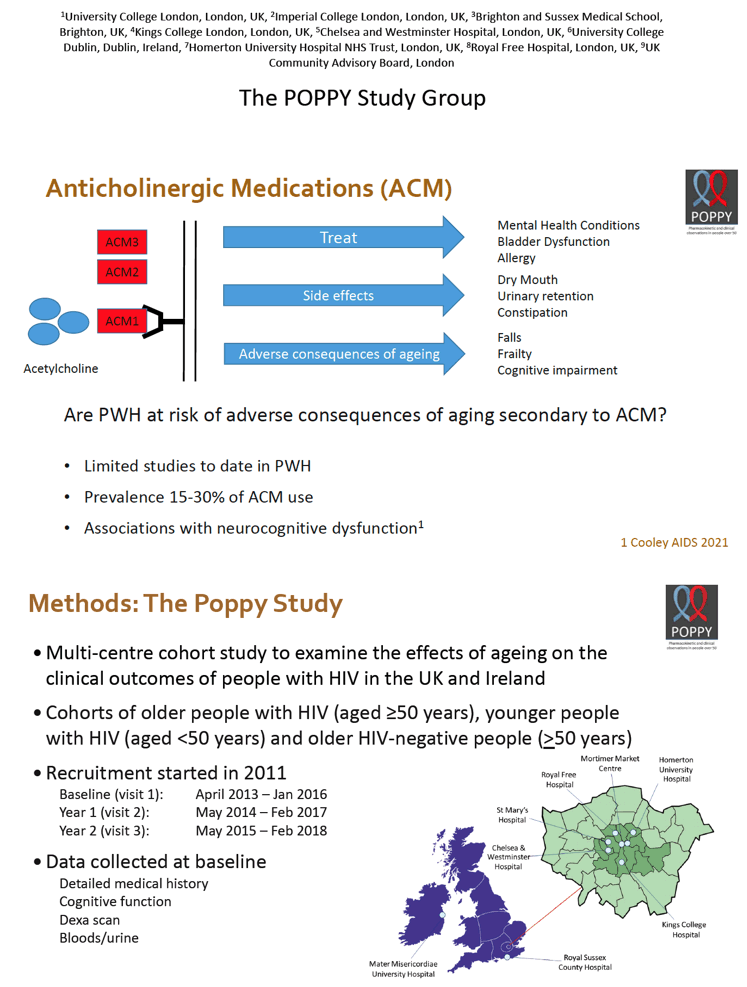
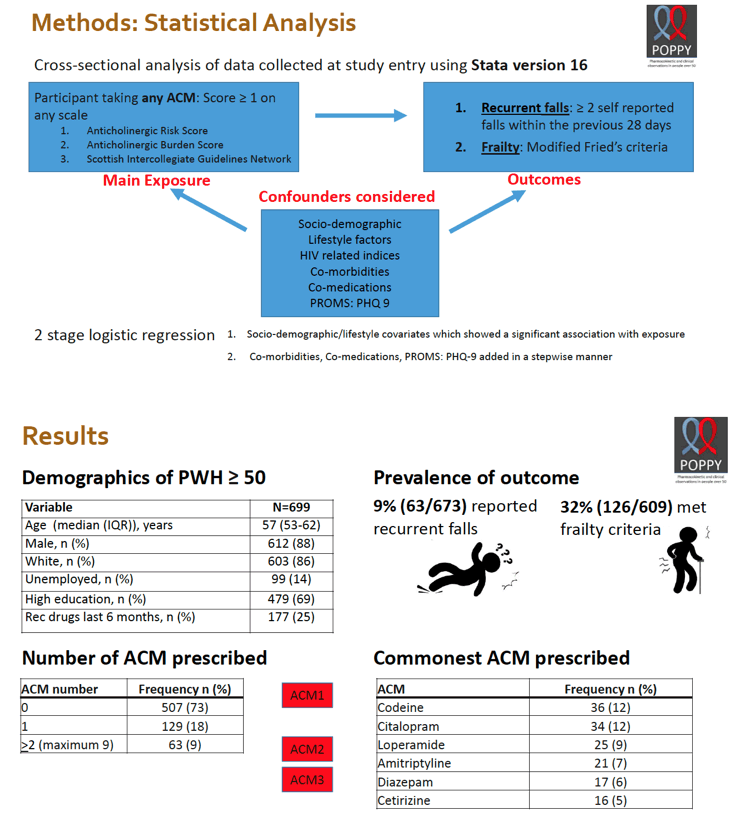
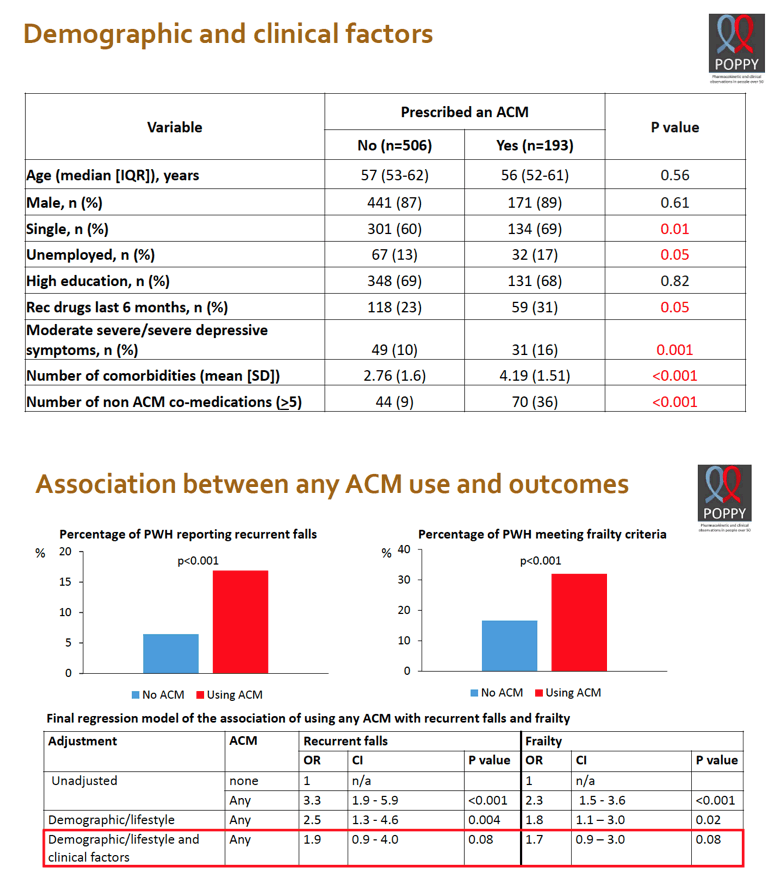
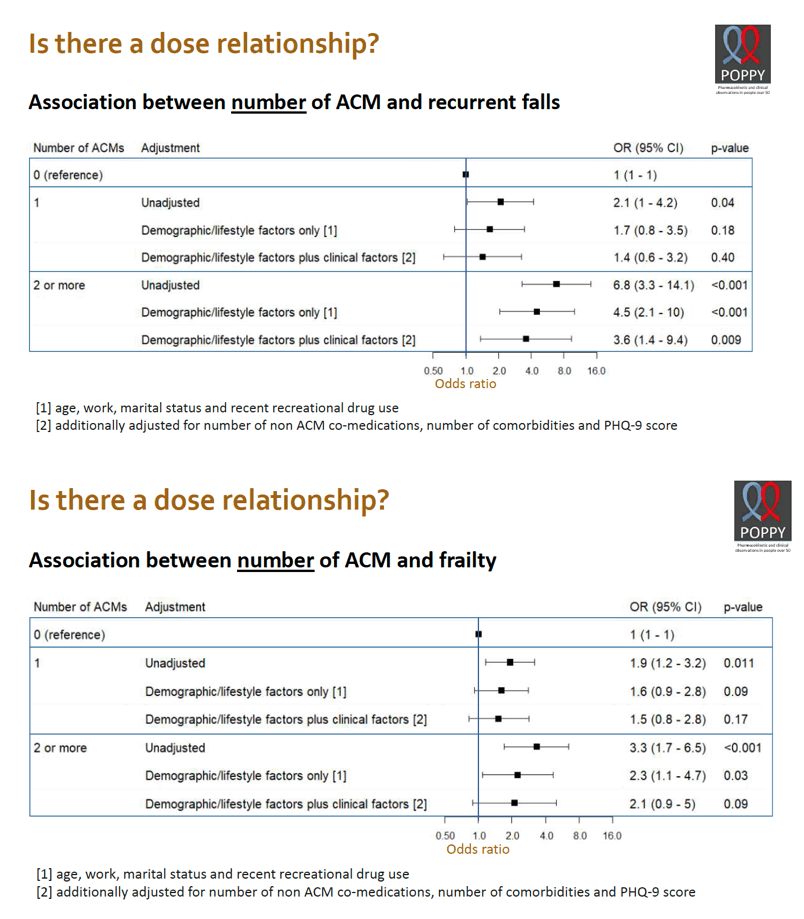

|
| |
|
 |
 |
|
|